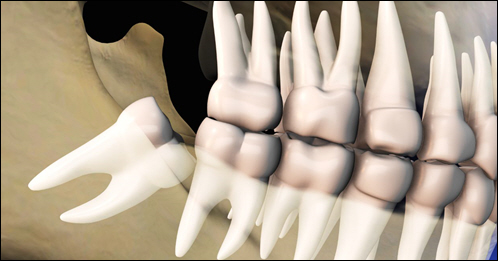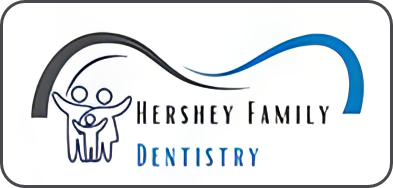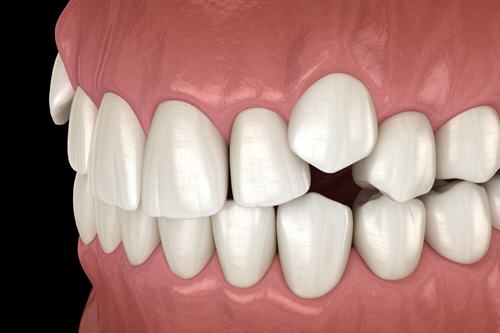Impacted teeth occur when a tooth fails to fully emerge through the gumline or gets trapped under the gum, often due to overcrowding or abnormal positioning. The most commonly impacted ones are the third molars, or wisdom teeth, but other teeth, like canines, can also become impacted. They can cause a variety of dental issues if left untreated, affecting both your oral health and overall comfort. Here’s what you need to know about the risks associated with impacted teeth and the importance of timely intervention.
What Causes a Tooth to Become Impacted?
Teeth usually become impacted because of overcrowding or because they grow at odd angles that prevent them from emerging fully. For example, wisdom teeth are the last teeth to erupt, and often there isn’t enough room in the jaw for them to align properly. As a result, they can become partially erupted, tilted, or remain completely trapped below the gumline. Impacted canines may also occur when there’s insufficient space or if they don’t follow a typical growth pattern.
Common Problems Associated with Impaction
 Impacted teeth can lead to multiple dental complications that can worsen if left untreated. Here are some of the main issues caused by them:
Impacted teeth can lead to multiple dental complications that can worsen if left untreated. Here are some of the main issues caused by them:
- Pain and Discomfort: An impacted tooth can cause pain as it pushes against neighboring teeth or as the surrounding gums become inflamed. This discomfort often worsens when chewing or applying pressure to the affected area. Some individuals may experience a constant, dull ache, while others may feel sudden, sharp pain.
- Infection and Inflammation: They create an environment where bacteria can thrive, leading to infection and inflammation. When a tooth is partially erupted, it becomes harder to clean, allowing bacteria to accumulate and cause infections like pericoronitis—an infection in the gums around the impacted tooth. This infection can lead to swelling, pain, and difficulty opening the mouth.
- Cysts and Tumors: In some cases, an impacted tooth may develop a cyst, a fluid-filled sac that forms around the tooth’s crown. If left untreated, cysts can damage surrounding teeth, bones, and nerves. Rarely, these cysts may even lead to benign tumors, which require more complex treatment.
- Damage to Adjacent Teeth: When an impacted tooth presses against a neighboring tooth, it can damage the adjacent tooth’s root, leading to increased sensitivity or even tooth decay. This pressure can also cause neighboring teeth to shift, creating misalignment that affects your bite and overall dental structure.
- Crowding and Alignment Issues: Impacted teeth can force other teeth out of position, causing overcrowding and alignment issues. Crowding may complicate oral hygiene, leading to an increased risk of cavities and gum disease. Misalignment may also require orthodontic treatment to correct.
Treatment
Treating an impacted tooth depends on the severity of the impaction and the associated symptoms. Dentists typically recommend removing impacted wisdom teeth to prevent complications, especially if they cause pain, infection, or damage to other teeth. Surgical removal is a common procedure that can prevent future issues and relieve current discomfort. For impacted canines, dentists may recommend a combination of surgical exposure and orthodontics to help guide the tooth into its proper position.
Don’t Ignore Impacted Teeth
Ignoring an impacted tooth can lead to significant dental and health problems down the line. Regular dental check-ups allow your dentist to monitor the growth of teeth and catch potential impactions early. By addressing impacted teeth promptly, you can avoid pain, infection, and costly treatments, keeping your smile healthy and aligned.

